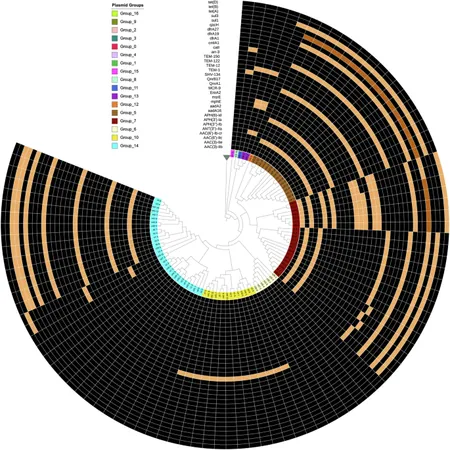
The Hidden World of Plasmids: Uncovering Antimicrobial Resistance Strategies in Wastewater Treatment
2025-09-09
Author: Yu
Examining Plasmids: Guardians of Antimicrobial Resistance
Recent investigations into the plasmid populations present in wastewater treatment plants (WWTPs) have illuminated a striking landscape of microbial survival mechanisms. Researchers have classified a total of 173 circular plasmids, ranging from a modest 2,337 base pairs to a staggering 292,404 base pairs. Notably, approximately 36% of these plasmids fell into the category of 'mega-plasmids,' showcasing lengths over 100 kilobases.
The Coexistence of Resistance
A remarkable discovery revealed that these plasmids often co-depend on one another for transfer and mobility, blurring the lines between antimicrobial resistance (AMR) factors and non-AMR elements. In fact, a staggering 42% of the characterized plasmids harbored at least one antimicrobial resistance gene (ARG). In total, 33 different ARGs spanning ten classes of antibiotics—including aminoglycosides, macrolides, and beta-lactams—were pinpointed in these sequences.
Rising Stars of Resistance: MDRs and Their Implications
Multidrug-resistant (MDR) plasmids, which carried up to 12 ARGs, accounted for a significant 73% of the AMR plasmids identified. Alarmingly, no carbapenemase genes—often dubbed the 'last line of defense' against antibiotic resistance—were detected, raising concerns about the evolutionary paths of these resilient plasmids.
A Link to Colistin Resistance
Among these plasmids, a particularly concerning finding was the presence of the colistin resistance gene mcr-9, located on highly similar mega-plasmids. These plasmids also demonstrated resistance to various other antibiotics and heavy metals, hinting at a potential trade-off that could enhance bacterial survival in harsh environments.
The Role of Toxin-Antitoxin Systems
An intriguing aspect of plasmid biology revealed 32 distinct genes associated with toxin-antitoxin systems, hinting at an advanced survival strategy where bacteria manage stress and potential ecological threats. Plasmids were often found in communities with varying sizes, indicating complex interactions among different genetic elements.
Environmental DNA: What Lies Beneath?
This research has also pointed towards the importance of analyzing the microbial communities present in WWTPs. By mapping these plasmids and their interactions, scientists are starting to uncover the hidden dynamics that underpin the transfer of resistance genes among bacteria—insights that could reshape our understanding of how resistance develops and spreads within diverse ecosystems.
The Bigger Picture: Ecological Implications
These findings transcend the laboratory, underscoring the significance of plasmid ecology in real-world scenarios. As antibiotic use remains prevalent, understanding the collaborative behavior of plasmids may offer new strategies for combating antibiotic resistance in both clinical and environmental settings.
The Future of Plasmid Research
As research methodologies evolve and the use of next-generation sequencing technologies advances, it would be prudent to shift our focus from isolated plasmid studies to community-based analyses. This revised perspective is crucial for grasping the complex realities of plasmid behavior and their roles in the global antimicrobial resistance crisis.
In conclusion, the more we learn about plasmids and their cooperative strategies in wastewater treatment plants, the better equipped we'll be to address the pressing threat of antimicrobial resistance that looms over global health.
 Brasil (PT)
Brasil (PT)
 Canada (EN)
Canada (EN)
 Chile (ES)
Chile (ES)
 Česko (CS)
Česko (CS)
 대한민국 (KO)
대한민국 (KO)
 España (ES)
España (ES)
 France (FR)
France (FR)
 Hong Kong (EN)
Hong Kong (EN)
 Italia (IT)
Italia (IT)
 日本 (JA)
日本 (JA)
 Magyarország (HU)
Magyarország (HU)
 Norge (NO)
Norge (NO)
 Polska (PL)
Polska (PL)
 Schweiz (DE)
Schweiz (DE)
 Singapore (EN)
Singapore (EN)
 Sverige (SV)
Sverige (SV)
 Suomi (FI)
Suomi (FI)
 Türkiye (TR)
Türkiye (TR)
 الإمارات العربية المتحدة (AR)
الإمارات العربية المتحدة (AR)